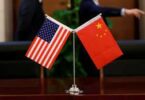California’s Santa Clara County on Wednesday announced that three people who died on February 6, February 17, and March 6 were later tested positive for the COVID-19. This has greatly moved up the first death case in the US from February 29 for more than three weeks, changing the timeline of the US’ COVID-19 spread. California Governor Gavin Newsom ordered on Thursday to review autopsies dating back to December 2019. A medical officer in Santa Clara said the three deaths are probably “the tip of an iceberg of unknown size.” The pandemic will be recorded in history, and history needs a true record instead of an impression distorted by politics. More importantly, the COVID-19 fight is far from over. By understanding the previous spread track, it is easier for us to predict its future changes. It is very likely that the woman who died on February 6 was still not the US’ earliest COVID-19 death case. Earlier deaths and infected people need to be found, and this may have a huge significance for people’s re-understanding of the COVID-19.
First, most people had believed that the epidemic spread from China to neighboring countries and regions, and then broke out in Europe and spread to the US. But in Santa Clara, a woman died from the COVID-19 as early as on February 6. In Europe, the first COVID-19 death was reported on February 14 in France. The infection time of the woman was presumed to be from early January to mid-January, much earlier than January 24 when the first confirmed case was reported in Europe. Then, did the epidemic spread more severely in the US or in Europe throughout February? A logical deduction is that the US’ actual situation was much worse than that of Europe at that time, or the two sides’ situations were similar.
Second, why the US was not as alert as Europe? Another logical deduction is that many COVID-19 cases were treated as patients of influenza. Japanese media raised such query a long time ago, but the CDC denied it. The new discoveries in Santa Clara have reactivated this deduction. The early mortality rate of the COVID-19 is not too high in many countries and regions. If the virus did not become the focus of society, those cases may be easily mixed with influenza and other complications. It now seems that there was very serious confusion in the US at the early stage, and more and more US experts and media agree to this.
The COVID-19 test in the US had been backward until the end of February. The CDC also set a very high standard for the COVID-19 diagnosis, in which all confirmed cases must have the experience of traveling to China recently. This meant refusing to monitor community spread. According to estimates from Northeastern University, the COVID-19 had spread undetected for a long time before testing showed the problem.
Third, the new discoveries have reset the standards of evaluating different countries’ epidemic fight. As for the US, its administration and the medical management department have obviously had serious misjudgment and incompetence. The earlier the COVID-19 is proven to appear in the US, the longer the US had turned a blind eye to the situation. The US’ first COVID-19 case was confirmed on January 21, and US President Donald Trump announced a ban on travel from China on February 2. But for a long time after that, the US had been preventing China-imported cases, not community spread. Starting from Trump, US politicians openly downplayed the risk of community spread. Even around the “Super Tuesday” on March 3, the two US parties were still holding large-scale rallying events, aggravating the spread of the virus.
Why did this happen in the US? Why have the warnings from US scientists and the WHO have been in vain? Is this accidental or unavoidable? Does it have anything in common with Wuhan’s lack of attention at the early stage? This is worthy of discussion for all humanity. As a typical Western democracy, the US apparently had a huge loophole in its understanding of the early COVID-19 situation. Its strategy has also shown surprising mistakes. However, it may not be easy to objectively reveal the whole truth.
Obviously, the Trump administration does not want their anti-epidemic measures to be reviewed. They worry that this will not only make people relive their serious failure in leading the COVID-19 fight, but will also provide more evidence of such failure. The entire Republican Party is defending the US government and its voters find it acceptable that the federal government is using lies to protect itself. The Democratic Party and its supporters are willing to expose the faults of the current government. However, their disclosure may be affected because of political interests. That is to say, the rift between Democrats and Republicans may lead to a serious distortion of the truth. Since the situation is grave, we strongly call on the WHO to intervene in the investigation in the US’ initial COVID-19 spread. The WHO’s participation can ensure that the investigation is not distorted by the upcoming presidential election. It can also ensure that the conclusions are scientific rather than simply catering to politics. People need to see true reports that are responsible for history.
Source: Global Times






